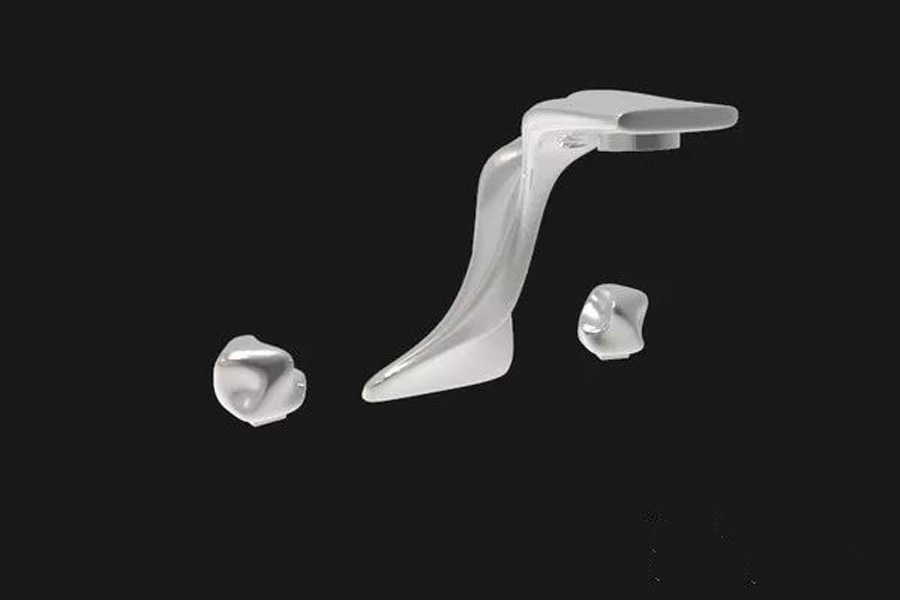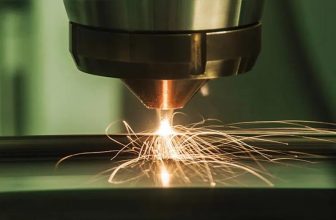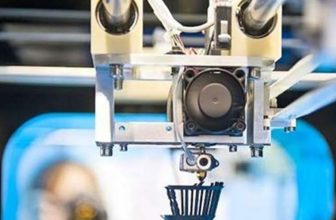
With the continuous progress of 3D printing technology, the performance of 3D printing materials has also been continuously improved, and the functions of 3D printed products have been continuously enhanced. The use of 3D printing to manufacture end-use tools (End Parts) has become more and more common. 3D-PRINTING-CHINA.COM recently launched Somos PerForm nano-ceramic resin material. Taking this opportunity, today we will introduce two 3D printing materials that can be directly used in injection molds. These two materials can be used in the specific field of “low-speed injection” molds. 3D-PRINTING-CHINA.COM provides 3D printing services for these two materials.
Applicable scene
Injection molding is an extremely demanding application for 3D printing materials, because the mold must withstand the processing load at high temperatures and maintain its dimensional accuracy during multiple runs. The most suitable application scenarios for 3D printed injection molds include:
- The product turnover cycle is very fast (1-2 weeks instead of 5-7 weeks).
- The output of the product is low (50-100 parts).
- It has not been fully finalized, and the mold design may be changed or iterated in the future.
- Relatively small product (less than 150 mm).
Material requirements
3D printing materials suitable for manufacturing injection molds must have the following characteristics:
High rigidity: The mold must maintain good dimensional accuracy during multiple runs, and withstand high pressure during the material injection process without being deformed.
High temperature resistance: High heat distortion temperature (HDT) is very important, not only to ensure that the mold will not fail during the injection process, but also to allow the process to be more accurately controlled.
High-detail expressiveness: Injection molds must have high dimensional accuracy and smooth surfaces. High-precision molds will produce high-precision parts. At present, the two mainstream 3D printing processes in the market that can produce highly accurate and smooth parts (without a lot of post-processing) are materials jetting and stereolithography (SLA).
There are not many 3D printing materials that can meet the above requirements. It has been proven that it can be used in small batches of injection molds in an industrial environment. It can be said that there are mainly two materials. One is the Digital ABS resin (Digital ABS) formed by Stratasys through material injection technology. DSM’s Somos PreFORM nano-ceramic reinforced resin formed by industrial-grade SLA stereolithography technology.
Material comparison:
1.Mechanical properties
In terms of strength and rigidity, Somos PerFORM material is quite outstanding, not only compared to Digital ABS, but also has very high tensile and flexural strength in all other industrial 3D printing materials (such as SLS nylon). However, it is also significantly more brittle (low elongation at break) and has lower impact strength. Of course, for mold manufacturing, the mechanical properties of Somos PerFORM are very superior, because the main requirements of the mold are high rigidity and strength.
2.Thermal performance-temperature resistance
The heat distortion temperature (HDT) represents the temperature at which a polymer deforms under a certain load. The glass transition temperature (Tg) is the temperature region where a thermoplastic material changes from a solid “glass state” to a more flexible “rubber” state. For injection molding applications, both HDT and Tg requirements are high, so Somos PerFORM is once again superior to Digital ABS.
3.Detail expressiveness
Both technologies can produce very delicate and complex parts with almost no need for post-processing. In terms of detail expression, Digital ABS has little advantage over Somos PerFORM, because the material jet polyjet technology has the highest dimensional accuracy in all 3D printing processes, followed by stereolithography SLA.
4.Production capacity
Both Digital ABS and Somos PerFORM have been used in industrial environments to produce small batches of injection molds. We use two production materials to test the mold, one is generally considered easy to be injection molded (PP polypropylene material), and the other is generally considered to be more difficult to injection mold (GF-PA glass fiber reinforced nylon material). Compare the production capacity of two 3D printing molds.
The production capacity of the mold will be affected by the difference in the mechanical and thermal properties of the two materials, which in turn will affect the number of parts that the mold can produce. Under normal operating conditions, after the first 3-4 runs, the 3D printing mold will reach a temperature of about 120°C. Good thermal stability is crucial to the quality of the mold. After the GF-PA test sample can be used in the digital ABS mold for 10 years, the quality of the product obtained is much lower than that of the product produced in Somos Perform. This is because the digital ABS mold has begun to deform and deteriorate, and the Somos PerForm mold is still stable.
Summary and conclusion
Injection molding is a very demanding mold application: the material must have high stiffness and must be able to work at high temperatures.
Material jetting and SLA are the only 3D printing processes that can produce parts with the dimensional accuracy and surface finish required for industrial applications. We compared two 3D printing materials, Digital ABS and Somos PerForm, used to make low-speed injection molds.
Although Digital ABS is an excellent material that can be applied to most functional applications, Somos PreFORM’s better mechanical properties and brighter thermal properties make it more suitable for mold making. This can be clearly seen by the number of parts that can be produced from a mold made of two 3D printing materials.





